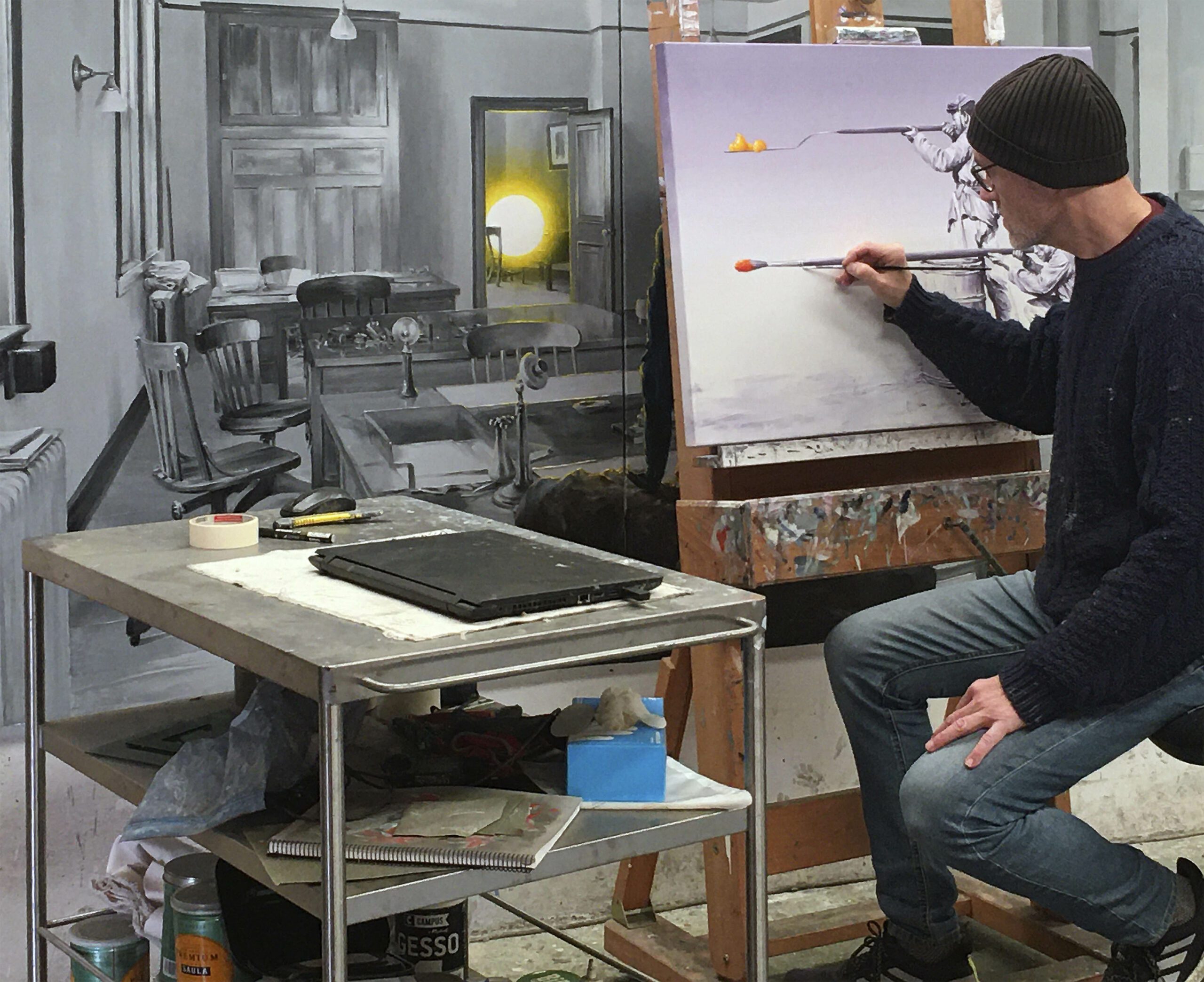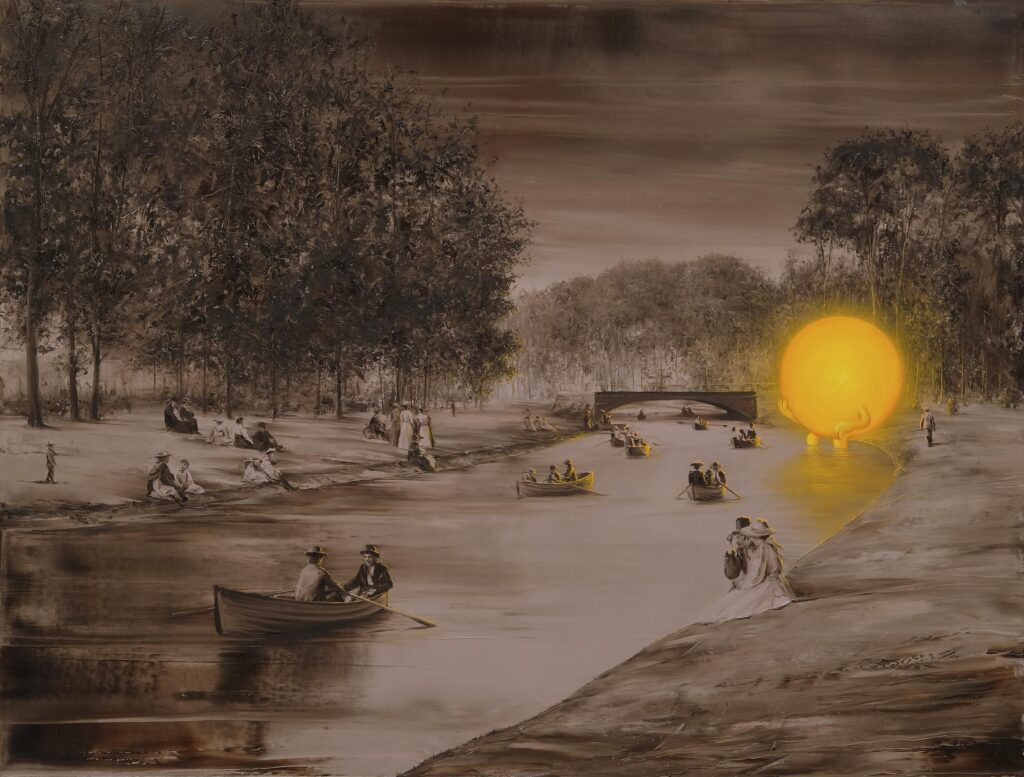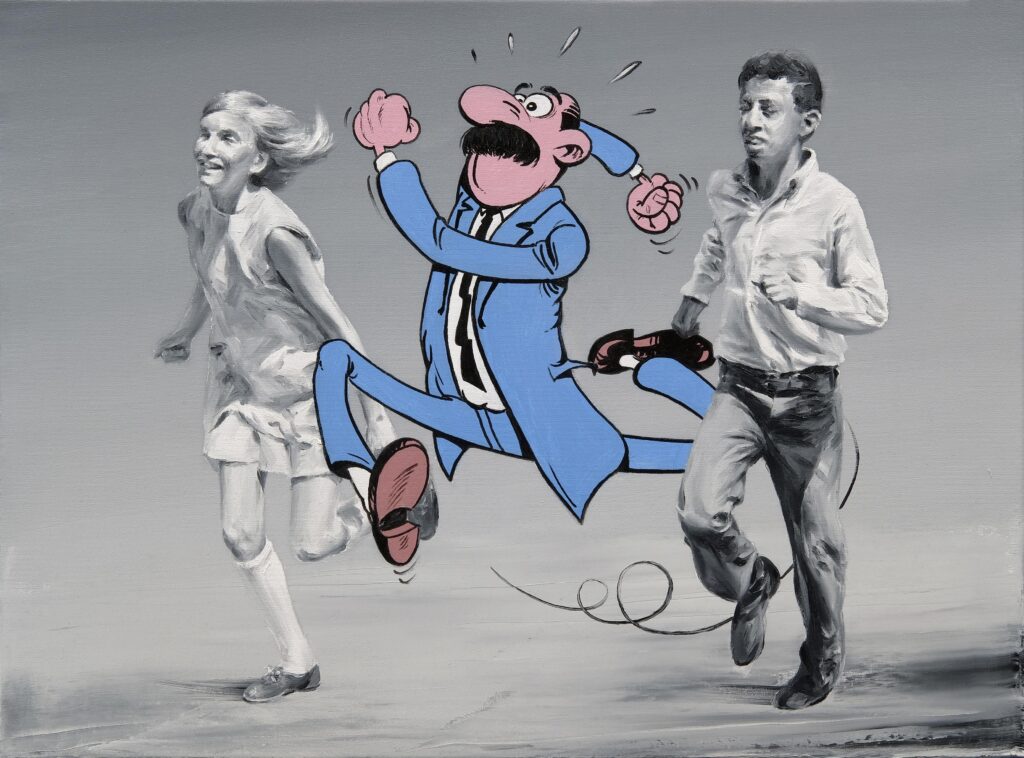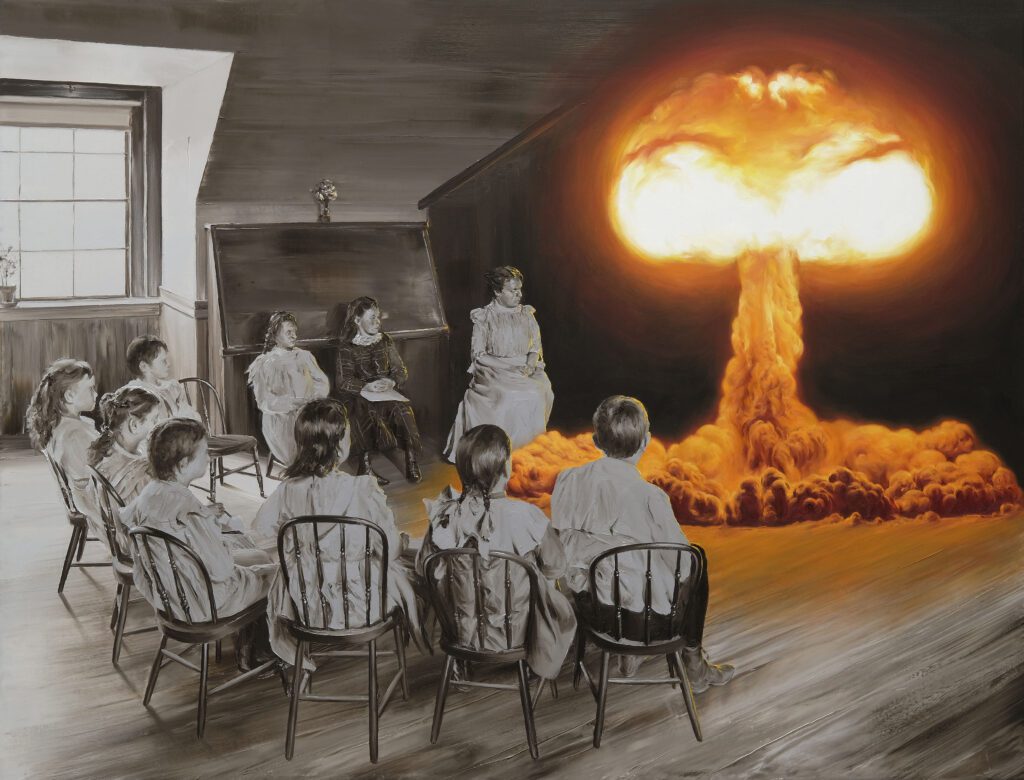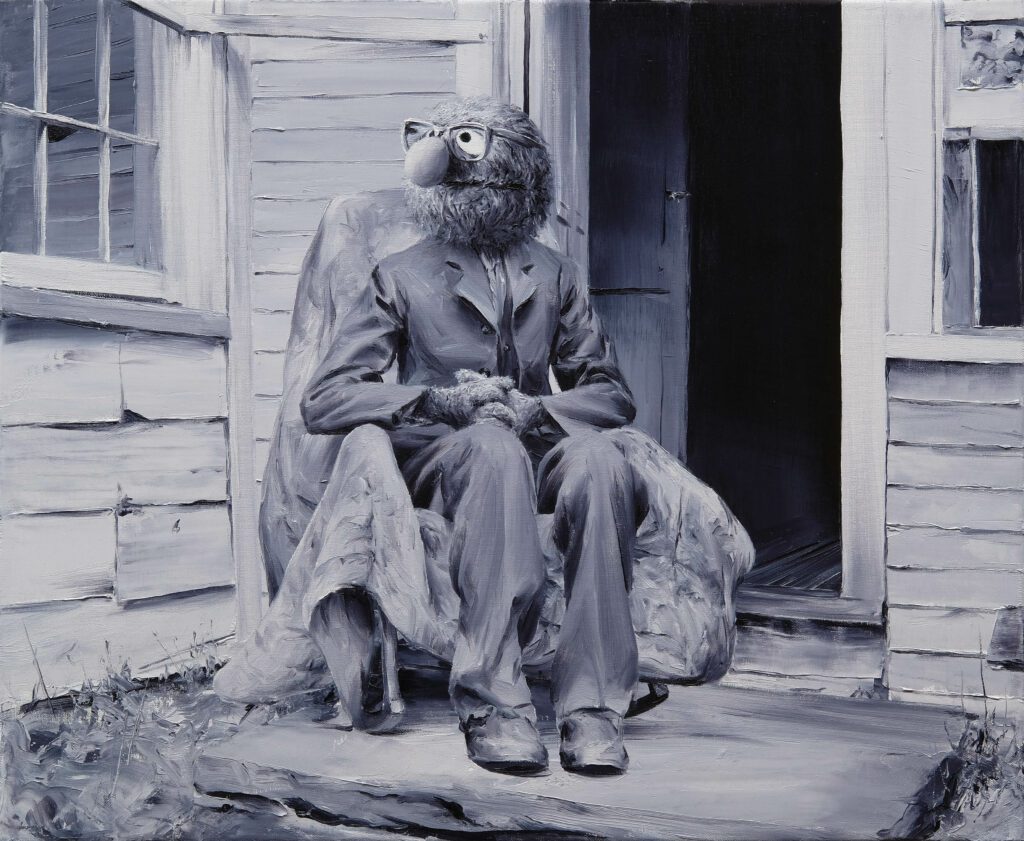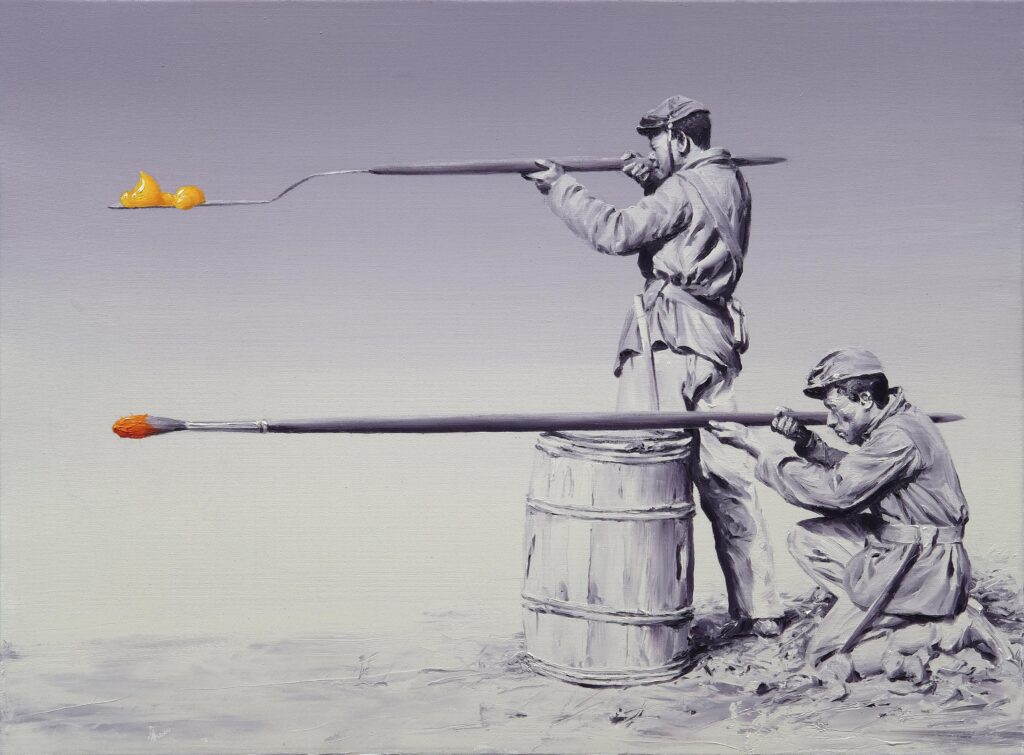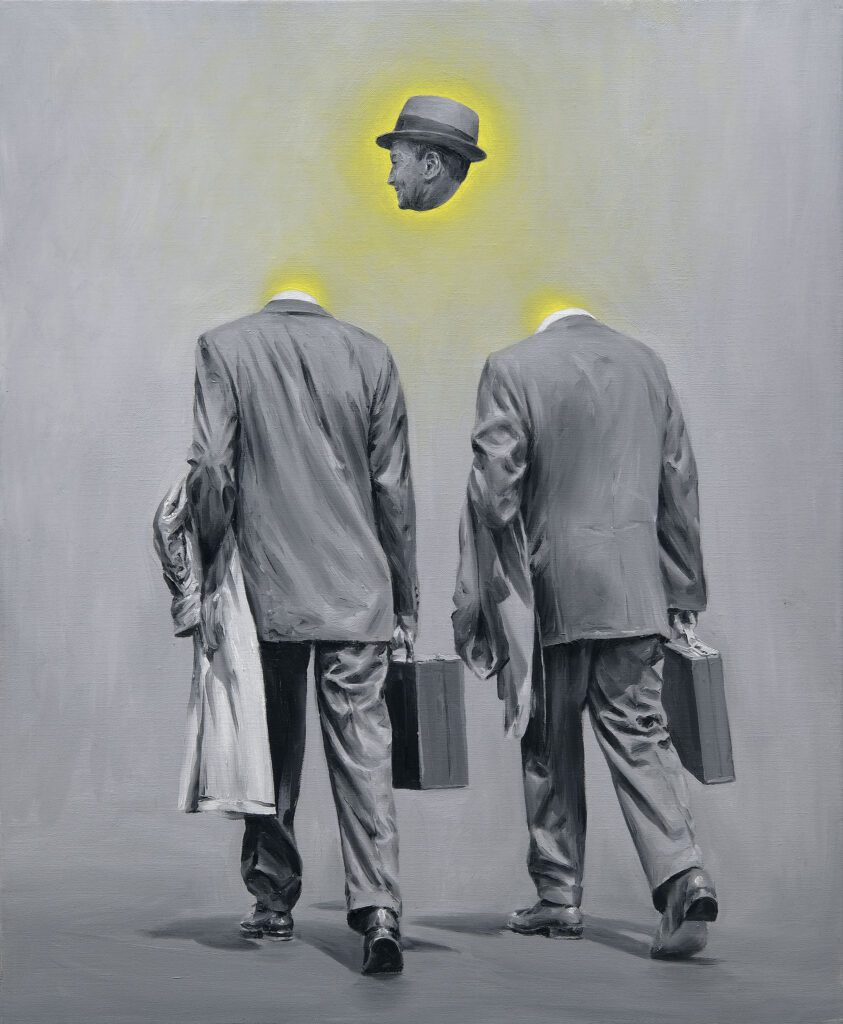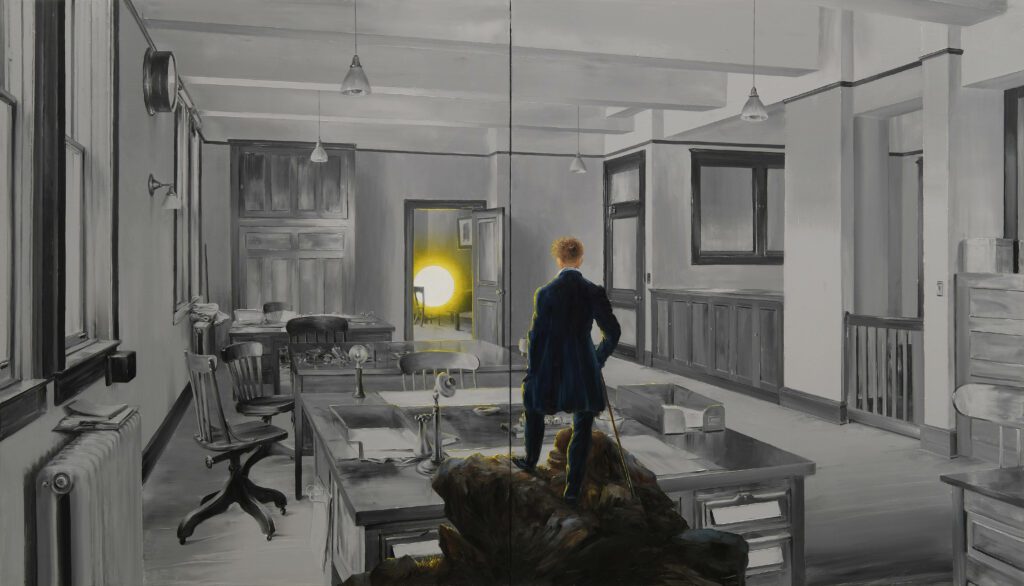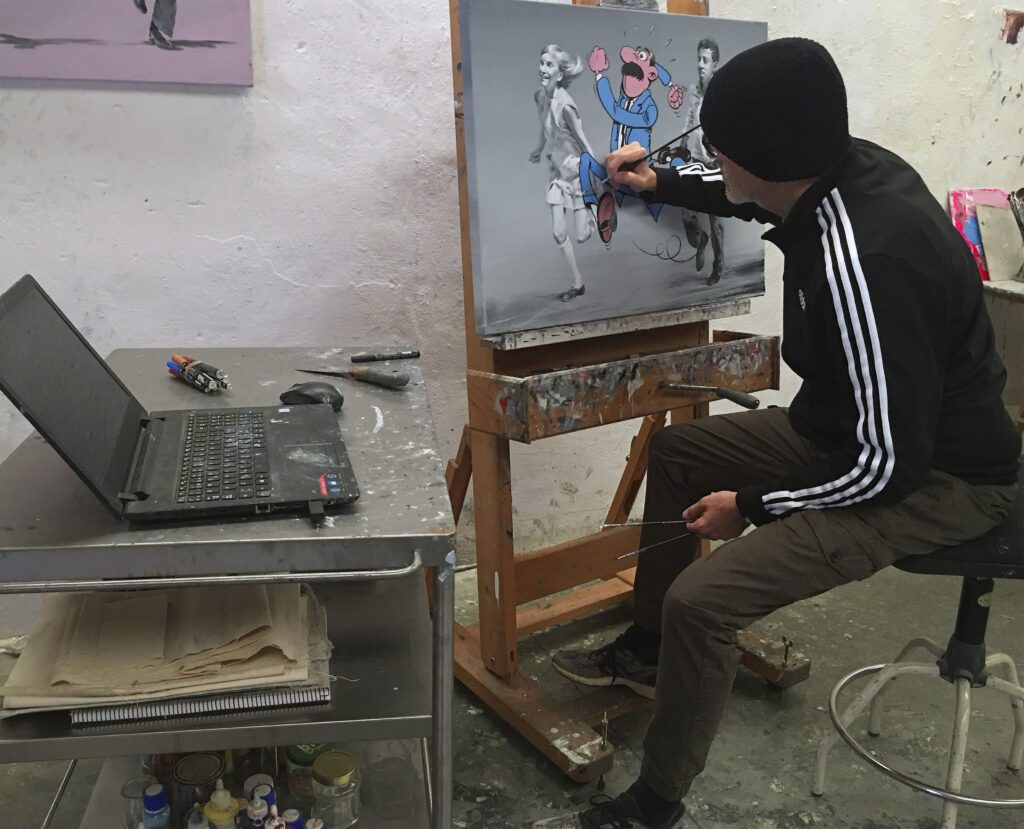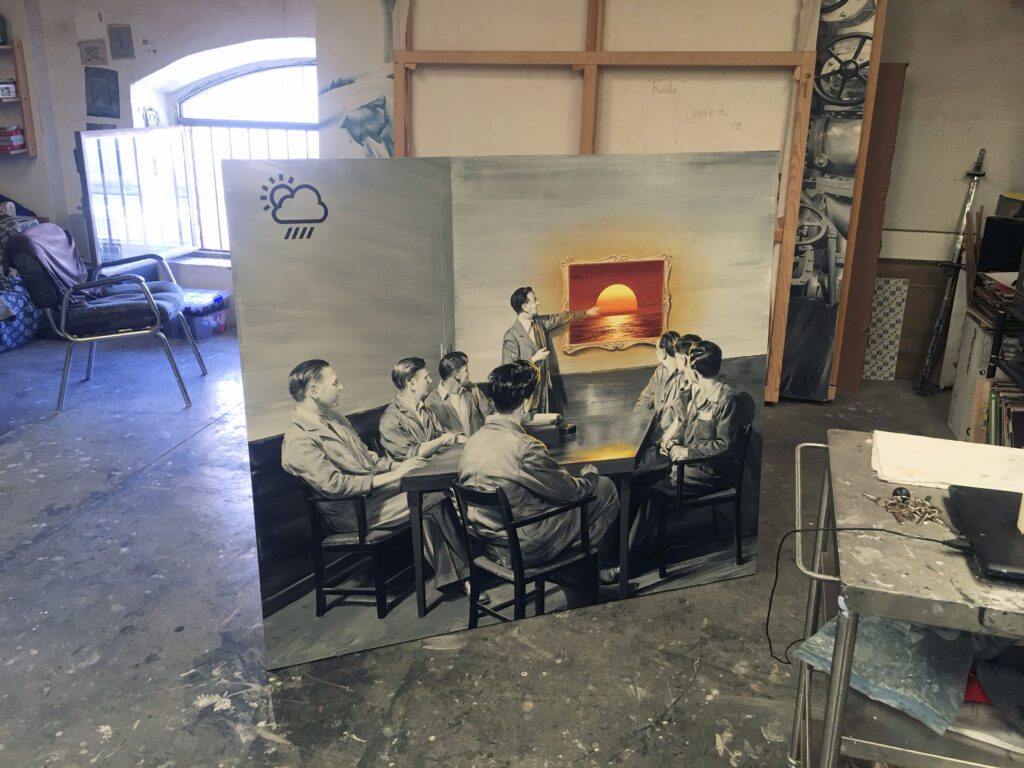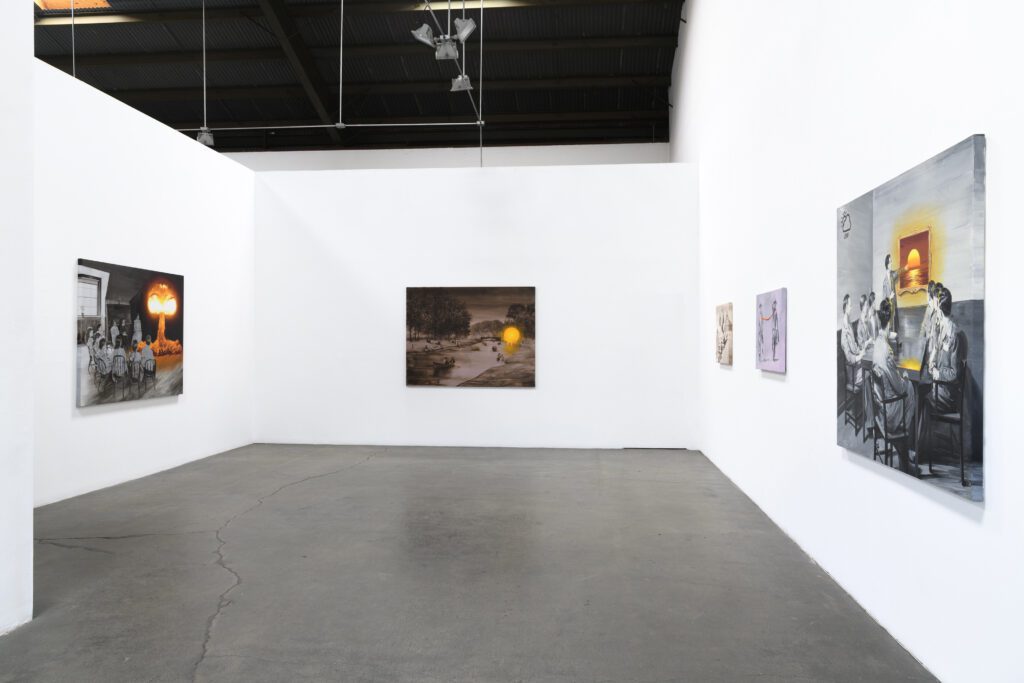Irony, skepticism and above all humor inhabit Paco Pomet’s universe (Granada, 1970). His monochrome works with focused points of light make them burn in full-color flames and glowing suns and moons brighten the game of whites and grays. “Art has become a refuge from the dystopian world we live in,” says Pomet, while the virtuosity of the artist’s oil brush manages to escape from reality through surrealist games to which he gives free rein, to the extent that the realism of his works allows him to do so.
He has just presented ‘Begginings’, his latest exhibition at Richard Heller Gallery in Los Angeles, with works where classic elements from 19th century photographs and characters from Francisco Ibáñez or Sesame Street comics coexist. We took the opportunity to talk to him about his latest exhibitions, his critical vision of the world we live in and his upcoming projects.
You started the year with a solo show at Galleri Benoni in Copenhagen and you have just opened at Richard Heller Gallery in Los Angeles “Beginnings” an exhibition that runs until May 8.
Both were scheduled for months ago, but due to lockdowns they have been dragging on. The exhibition at Richard Heller Gallery in Los Angeles now on view is going great. The response from the public and collectors has been very good. In a way it is a continuation of “Melancholia” the last one I did with them in 2018. I have moments of strong melancholy and others of great enthusiasm; it happens to me since I was a child. A sunset can seem to me as an absolute marvel or something terrible, depending on how I feel (laughs). I am not a very stable person emotionally; I tend to look outwards and not inwards and light and landscape affect me a lot so I try to play with it. This new exhibition was like an inertia of the previous one, I feel that I am finishing talking about all of this. I had more things to say through new ideas.
Little Big Grief, oil on canvas, 2020.
Middle Age Crisis, oil, acrylic and marker on canvas, 2021.
Your work somehow always has a melancholic point, sometimes even disturbing… Where does it come from?
There is a point of scepticism in my work that comes from maturity, you realize that you must be prepared for many disappointments. Life is like a learning of disappointment. The enthusiasm you have when you are young becomes more and more refined as you grow up, the edges break down. There are few moments when as an adult you can become “a happy fool” as I say, when everything is fine. A mixture of scepticism and perplexity takes hold of us, facing a wonderful but at the same time bland and mean world.
And how do you feel now in your maturity?
I have just turned 50 and now, with children, there comes a time when time is overwhelming, and it gets on top of you. But perhaps this is the happiest time in my life. I feel everything in my face: my body listens to me, my head works well, I love raising children… But it is terrible how fast it goes by; it overwhelms me a lot! Time is like a big fire that burns very brightly but burns out very quickly.
The Lesson, oil on canvas, 2020.
Sunset Porch, oil on canvas, 2020.
Like those fires that appear in your works illuminating the whole space…
That may be true. Those fires may be revealing a little of what I said. I like to use colour not in a descriptive way, but in a symbolic and almost semantic way, to emphasise a specific meaning or to lead the viewer’s gaze towards something. The same thing happens with those reflections of light, I like to play with light because it is what breaks the monotony of everything, casting shadows and volumes. In that sense, I have always liked tenebrism much more. I love the colourists although I don’t understand them very much, colour makes me quite confused. However, if I focus it and keep it very intense in one area, I can also play with the rest and that makes the monochrome, which is painted in a much more discreet way, stand out. It helps me a lot to visually order the image and to bring the meaning of the painting to one place or another.
Where do you want to take the viewer?
The concept of a painting as a window onto something else interests me a lot more, that’s why the figuration. The idea is good in itself and it is when you give it body that you can take it to the spectator. The hand can work wonders, but that step beyond, for example, is taken by Goya, or Bosch, who for me are not the best painters there are. They don’t have the hand of Velázquez or Sorolla, who paint what they see, but who nevertheless stay there. There are artists who know how to dig in such a way that they extract gold from small ideas.
Vanguardia, oil on canvas, 2021.
The Individualists, oil on canvas, 2020.
In your creative process you work with descriptive, documentary images from the last century, even the 19th century. What is it about this material that interests you? Are they anonymous photos or do they have a meaning…?
I like most of the photos to be anonymous, from photographic archives that have no artistic background and that the people who appear do not have a public domain reference. I even like to dive into private albums, anodyne or vernacular photos. There is an amazing public access image bank in Vancouver, and it has some wonderful photographs of large public works, construction of dams, bridges, tree felling… They are spectacularly detailed and very descriptive, very cold, but that gives more room for artistic intention. I work through photography but not as a final concept that I transfer to the canvas, that would be a mechanical act and would bore me, so I play with them once I get on the canvas. I give free rein as much as possible, in the end I like to be realistic, and that freedom must be well thought out.
Behind these ‘retouched’ photographs lurks a more critical content?
In some of them I look for a vindictive or activist charge. In others I don’t. I don’t want my work to be seen only through a specific prism. The paintings that I like the most or that end up holding my gaze are those in which I haven’t projected a semantic path or a very closed meaning. A good work is like a mirror, in which the viewer’s fears or aspirations and desires appear because the painting digs into his or her own needs. I like to launch an idea and a small path for the viewer to follow on their own.
When there is, where does the critical load move?
It may be about climate change but in general it is the perplexity at human stupidity that strikes me most. I think it was Einstein who said, “there are only two infinite things: the universe and human stupidity, and I’m not so sure about the former”. We are hyenas for this world, and it is true that, although human beings are capable of the best, lately we have a too dystopian perspective of what is happening. We have awakened certain ghosts and in the rottenest heads it is thought that all this that is happening is not really our fault. It is absolutely our responsibility, and we are constantly complaining, but at the same time we are sweeping everything away. In the end it’s true that the only thing we have to take refuge in is art, if you take a slightly objective look at the world, you become quite depressed.
Das Erhabene Büro [Diptych], oil on canvas, 2020.
How have you personally been affected by the global pandemic situation we have just experienced?
For me actually, except for the two weeks of absolute seclusion, the rest of the time I have been going to my studio without a problem. Many artists have not been too negatively affected by this; more and more works are being bought online and it is making the whole commercial exchange accelerate through the devices. However, I find it difficult to buy online, maybe if you know an artist very well, but I’m not sure I would do it. It is necessary to see the work live.
Has your relationship with social media changed?
It was precisely my 2020 resolution, I got fed up with everything, so I promised myself not to post likes, comments, or likes in comments or anything else to stay away (laughs). And then the pandemic broke out and of course I had to keep it. I’ve been quite absent from Instagram, but I keep checking what others are doing. I put up with it because it was my New Year’s resolution but what a bad time… This year I feel like commenting and chatting… I chose a bad year to do it (laughs). Against the tide!
As an artist, do you enjoy collecting art? What artists would you collect?
What I can. I’ve exchanged work with friends, and I’ve bought a few things at fairs, but small things… I like to build up a personal collection. What happens is that what I like I it like a lot, but there are very few things that I like a lot… Neo Rauch and Friederich Kunath are first-rate artists and I love them, I’d love to have something of theirs, but it costs a lot of money! I’d have to look for something small when what I want to have is a good painting… I also like Mark Tansey a lot, in Spain Rubén Guerrero is an incredible guy, a very gifted painter, like Pere Llobera.
What is the latest thing you are working on?
Now I’m working on the group show ‘Deep Blue’ which will be held in May at the Hall Art Foundation collection in the United States with top artists and I’m proud to be there. Also in May I have an exhibition at WOAW Gallery curated by Sasha Bogojev. Next I will be preparing my participation in Enter Art Fair in Copenhagen with the Danish gallery Galleri Benoni.
Courtesy of Richard Heller Gallery
*Paco Pomet will be presenting his work at the Urvanity Art 2021 fair in May with My Name is Lolita gallery.

